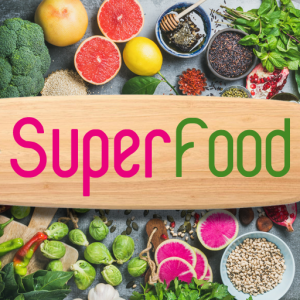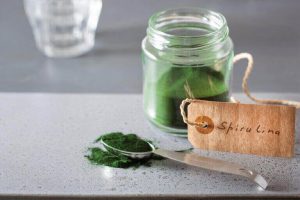In today’s world, the issue of nutrition, especially in infants and young children, is one of the biggest and most important issues in developing countries, both in terms of providing protein, energy, and in terms of providing micronutrients, vitamins, and other substances with nutritional value. As we know, the most types of snacks consumed by children are cakes, biscuits, and syrups, and among other products, wafer consumption is higher than snacks such as puffs, chips, lavashek, pastilles, soft drinks, and seeds. It is clear that approach
Based on the enrichment of children’s favorite foods, it can be one of the most important, appropriate and practical methods to prevent malnutrition. In addition, consumption of snacks is common among older age groups, including teenagers and adults, and as a result, we see more or less the problems caused by food poverty among these older age groups as well. The use of food supplements obtained from
Natural resources seem to be a suitable solution to meet the nutritional needs of different sections of the society.
In this regard, the use of natural and marine resources is of particular importance. The presence of unique bioactive compounds has made microalgae, especially spirulina microalgae, among functional and beneficial foods. Spirulina is among the multicellular microalgae, spiral in shape and blue-green thread, belongs to the branch of cyanobacteria and tosynthesizers and through Binary division reproduces. Spirulina protein has a remarkable protein content with a suitable profile of amino acids, reaching 70% of dry weight and 7-16% of saturated fat, and it is a rich source of various bioactive compounds, including essential fatty acids such as gamma linolenic acid and linoleic acid. Minerals, vitamins and pigments are considered. A relatively balanced combination of eight essential amino acids in this algae has given it a high biological value in addition to the high absorption power of these substances in the body. Another valuable feature of spirulina is its low nucleic acid content (less than 5%), which is less than other microalgae.

According to extensive research conducted by researchers in 2006, results were obtained indicating the existence of positive antioxidant effects of the active compounds in spirulina, including phycocyanin, selenium, and carotenoids. As these compounds have shown remarkable ability to remove radicals. With this definition, spirulina can play an important role in the treatment of diseases caused by allergies, inflammations, oxidative stress, viruses, as well as diseases of the immune system, liver and even cancer. So far, there have been many researches in the field of enrichment and use of spirulina microalgae in production products. It has been done on the basis of cereals. For example, following the studies conducted in 2000, by adding 3% of Spirulina platensis powder and 3% of soy protein powder to raw milk and inoculating it with Streptococcus thermophilus, they were able to make yogurt rich in vitamins, micronutrients and protein with a content of 5. 6% and 1.2% fat or content and improve the nutritional value and taste of the product.
In another study, researchers were able to improve its nutritional properties by using spirulina algae in the production of a type of snack called Pacado. The results indicated an increase in dietary fiber, protein, ash, phenol content and free radical scavenging activity. Also, in order to produce industrial cookies, wheat flour was enriched with spirulina microalgae powder. The results proved that the amount of protein, iron and gammalinolenic fatty acid in the cookies enriched with spirulina increased significantly compared to the control sample. While the amount of peroxide decreased significantly with the increase of microalgae, and in total, by adding 1 to 1.5% of spirulina to traditional Iranian cookies, while obtaining an enriched product, its nutritional and sensory characteristics were improved. They investigated the effect of mixing spirulina biomass with wheat flour in three concentrations of 5, 10, and 20 percent by weight for the production of dry pasta, and evaluated the nutritional and technological quality characteristics of the product compared to the control sample. In general, they showed that the protein content increased, and at the same time the digestibility decreased. The content of phenolic compounds and antioxidant activity were measured under laboratory conditions, and the results indicated an increase in antioxidant activity and the amount of these substances compared to the control sample. These evidences have shown the improvement of biological, functional and nutritional characteristics of pasta containing spirulina microalgae.

Based on the research, it can be concluded that food fortification of children under five years old is a suitable method to prevent malnutrition. Spirulina microalgae is an inexpensive and rich source of protein, iron, vitamin 12 B and γ-linolenic fatty acid, the use of which in the combination of products used by children, such as cookies, can improve the level of health and prevent the occurrence of malnutrition in children. Due to traditional moral systems such as religion and socio-economic factors, adults resist accepting new foods containing microalgae, but accepting this type of food is easier for children who are more inclined to unusual preparations. For example, in Mexico, a drink containing a 50% spirulina suspension was given to babies through a bottle without any problems. Despite the widespread use of spirulina in the world, especially in developed countries, this useful algae has not been used in Iran. Introducing this algae and investigating the possibility of its use can provide the basis for the production of products that can be used in different parts of the food industry.
Roya Algab Pars is one of the limited producers of spirulina algae. Those interested in the production and cultivation of this money-making algae can get to know our product line closely and benefit from relevant advice and guidance.
In 1997, the US Food and Drug Administration approved spirulina microalgae based on numerous studies conducted on rodents and the long-term use of spirulina microalgae and announced the maximum daily intake of this algae for an individual is 1.35 grams. So far, several studies have been done in the field of investigating the effect of adding different proportions of different types of microalgae in bakery products. By adding a homogenous mixture of spirulina species to ginger bread, chocolate cake and cookies, the taste of algae is similar to the bitter taste of spinach or green tea.
It prevailed in all the above foods and the algae changed the color of the food in which it was used. The research showed that it is possible to use spirulina microalgae for protein enrichment in bakery products, without significant changes in the texture, expansion coefficient, composition percentage and sensory acceptance of the product. They enriched the pasta with certain amounts of spirulina algae. In their research, microalgae improved the quality indicators of the enriched samples in comparison with the control sample, and the color of the microalgae paste remained relatively stable after cooking. Increasing the concentration of microalgae (0.5 to 0.2%) resulted in an increase in pasta hardness. In addition, microalgae pastas were more acceptable than the original sample.

If we want to summarize the results of research in the field of food enrichment with spirulina, we must say that spirulina cells do not have a hard cell wall, which causes rapid absorption of water by its cell contents, especially proteins. Actually, spirulina protein molecules compete for water binding sites with starch molecules due to their hydrophilic property, which leads to the instability of the starch gelatinization mechanism and its delay. The low level of spirulina used has made the texture changes of the cookies not significant in comparison with the original sample. The comparison of all the tests conducted by the researchers shows that the obtained samples were very satisfactory.

In a general conclusion, it can be stated that by using a cheap and useful source of spirulina microalgae in the composition of cookies, especially at the replacement level of 1 and 5.1% by weight, a product with a good nutritional and sensory quality can be produced. Considering the increasing demand for healthy food products, the increasing acceptance of foods containing spirulina microalgae in the world, the low production costs and the high nutritional value of this microalgae, research and development in this field is considered necessary in order to increase its use in the Iranian food industry. It arrives
It is hoped that those who are interested in the production and breeding of this beneficial algae in our country will be able to give new life to this nascent industry and revive this growing industry. To provide more information, contact Raya Algab Pars and get to know closely the production line of spirulina algae.










